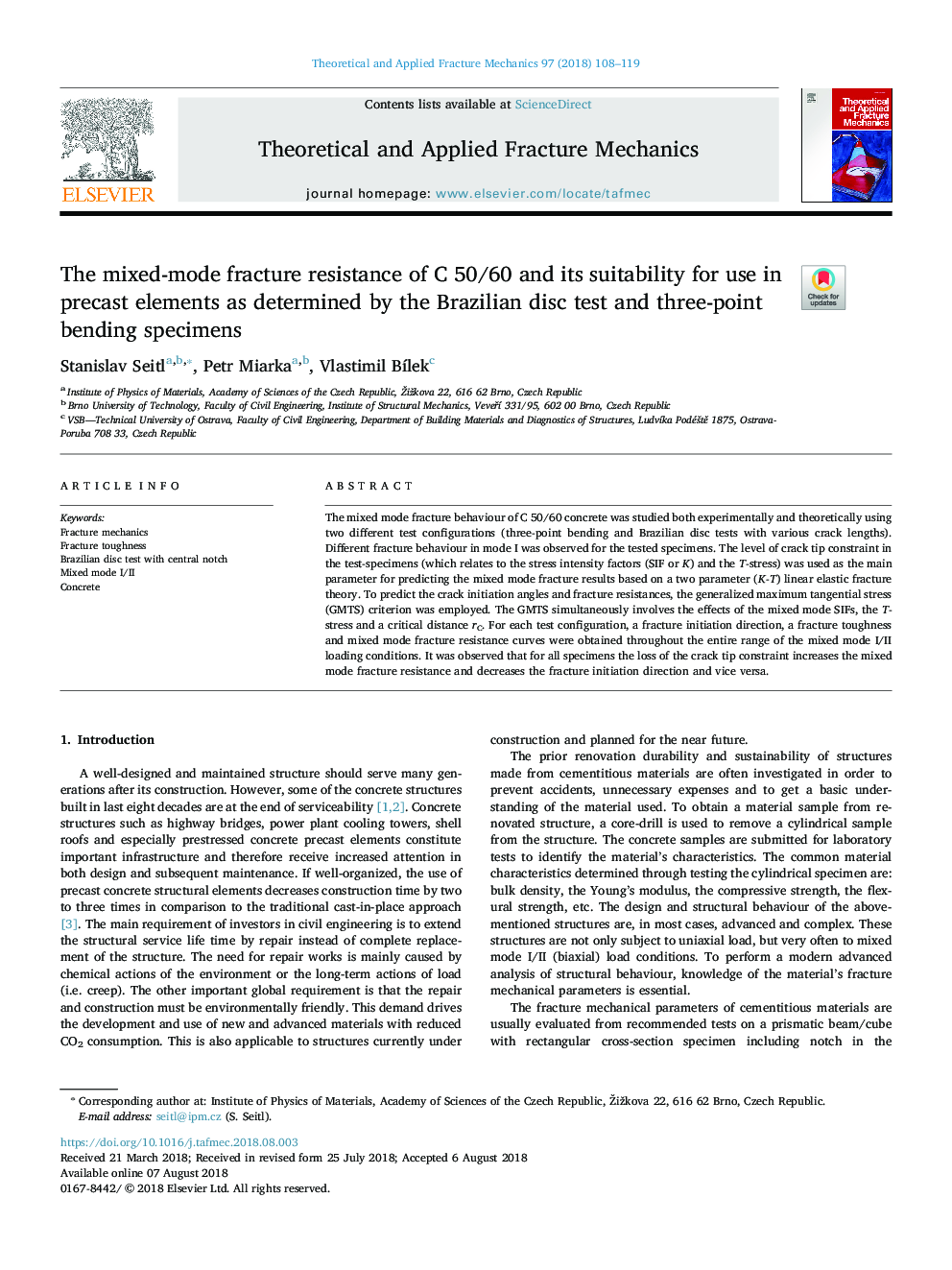| Article ID | Journal | Published Year | Pages | File Type |
|---|---|---|---|---|
| 7195983 | Theoretical and Applied Fracture Mechanics | 2018 | 12 Pages |
Abstract
The mixed mode fracture behaviour of C 50/60 concrete was studied both experimentally and theoretically using two different test configurations (three-point bending and Brazilian disc tests with various crack lengths). Different fracture behaviour in mode I was observed for the tested specimens. The level of crack tip constraint in the test-specimens (which relates to the stress intensity factors (SIF or K) and the T-stress) was used as the main parameter for predicting the mixed mode fracture results based on a two parameter (K-T) linear elastic fracture theory. To predict the crack initiation angles and fracture resistances, the generalized maximum tangential stress (GMTS) criterion was employed. The GMTS simultaneously involves the effects of the mixed mode SIFs, the T-stress and a critical distance rC. For each test configuration, a fracture initiation direction, a fracture toughness and mixed mode fracture resistance curves were obtained throughout the entire range of the mixed mode I/II loading conditions. It was observed that for all specimens the loss of the crack tip constraint increases the mixed mode fracture resistance and decreases the fracture initiation direction and vice versa.
Related Topics
Physical Sciences and Engineering
Engineering
Mechanical Engineering
Authors
Stanislav Seitl, Petr Miarka, Vlastimil BÃlek,
